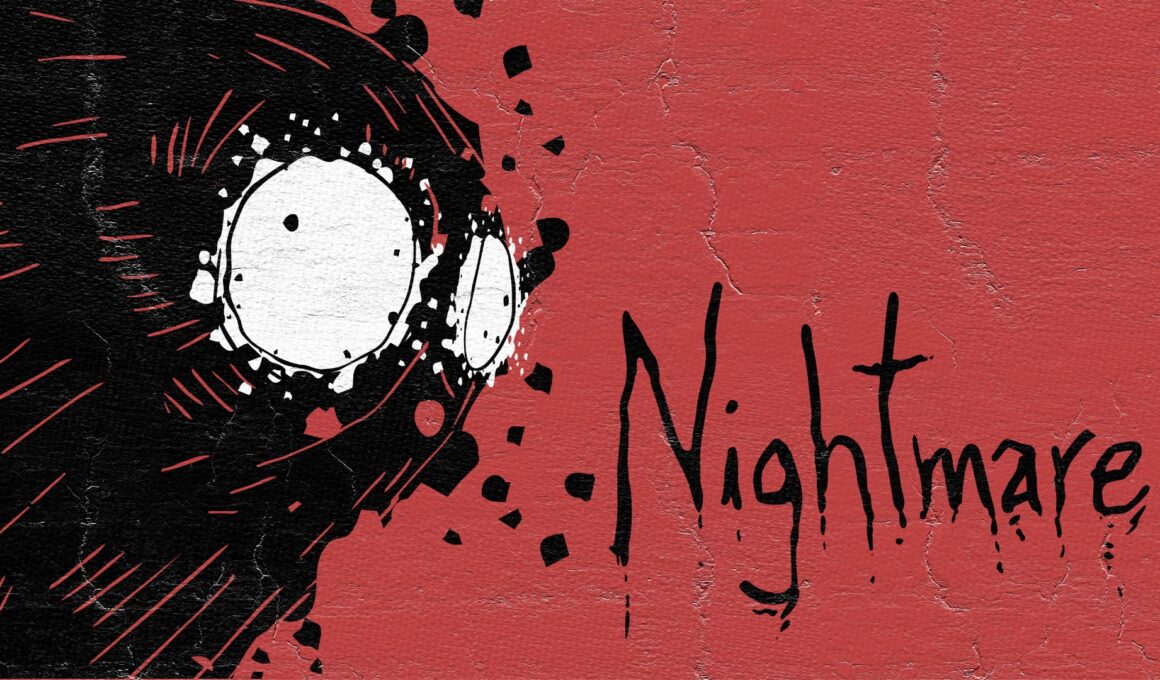The sight of a child screaming or crying as she wakes from a dream is upsetting. In part, this is because parents feel so helpless. Indeed, they are helpless. And yet, though there may be little you can do at the time, other than hug and soothe them, much can be done to prevent them happening at all.
The Difference Between Nightmares and Night Terrors
A distinction must first be made between the two. People often speak of nightmares and night terrors as though they are the same. In fact, there are fundamental differences.
Both are forms of sleep disturbance, but a night terror is more unpleasant to witness. The child often screams or thrashes about, kicking off the bedclothes and even hurting herself. Some sit bolt upright, with their eyes wide open, like a scene from a horror movie. Others jump out of bed, as if in a panic.
Night terrors can last for between a few seconds and half an hour, and they can happen more than once during a single night. Most astonishing of all, especially for those with no experience of such things, when it is over the child usually falls back asleep, sometimes instantly.
But, though the child seems to emerge from sleep abruptly, they are not fully awake. Indeed, they may not even recognize you. The child is trapped in a kind of twilight zone, neither awake nor asleep. All this usually happens in the early part of the night, as they leave a deep, non-dream state. If you speak to them about it the next day, the chances are they will remember nothing.
Though the whole experience may disturb and upset you, it is important to remember three things. First, they are common, especially in children aged between three or four and seven or eight. Second, the child will soon grow out them. And third, they are in no physical pain and no physical danger, though it appears so.
Nightmares are different. These occur during the REM phase of sleep, often between 2 and 8 am. Unlike a night terror, a nightmare usually wakes the child. Whereas someone undergoing a night terror remains in a kind of gray zone, neither fully conscious nor fully asleep, the child emerging from a nightmare will be fully awake. And, like an adult, they usually want light and company, and may even wish to get out of bed so as to shake off any lingering effect.
Another key difference is that children do not remember a night terror and thus have no wish to discuss it. But children do remember their nightmares, often want to talk about them, and are soothed by doing so. They may also fear going back to sleep. In some cases, they even fear going to bed and start to cry when you tell them they must.
A good way to distinguish between them is by asking yourself who was more upset, you or your child? Who wants to talk about it next morning? If your child seems most frightened, it was probably a nightmare. If the experience has disturbed and upset you, it was probably a night terror.
Causes
Sleep deprivation is a common cause of night terrors. For example, a child is more likely to experience one after a long flight, or during the build up to a birthday party, etc., since they were too excited to sleep. The same is true of erratic or disrupted sleep patterns: for example, if there is a major family drama, and the child is being moved from house to house, or having to visit hospitals late at night.
Surprisingly, deep sleep also causes night terrors. To return to the hypothetical examples, once the family drama is over and the child begins to relax, she has a great deal of sleep to catch up on. She then sleeps more deeply than usual, leading to the kind of situation described earlier. Illness, especially fever, can also increase the depth of sleep and make night terrors more likely, as can certain types of medication.
Anything that suddenly awakens the child also increases the risk. This is especially true when the sleep has been deep. For example, a child gets into the habit of drinking fruit juice shortly before bedtime. If he also happens to be tired and thus falls into a deep sleep, the need to urinate is resisted, resulting in a half-awake, half-asleep, state. Sudden, loud noises, such as a neighbor’s dog or a car alarm also lead to that sort of state, as do anxiety and excitement.
Stress is another common cause, especially when combined with tiredness. An over-wrought, exhausted child, who is struggling to sleep and yet wants to, is more likely to suffer night terrors. Another, less common, cause is known as “sleep apnoea,” in which enlarged tonsils or adenoids (tissues in the throat) block the child’s airways. During sleep, he struggles to breathe properly, causing a sudden, though partial, awakening. Sleep apnoea is nothing to worry about, by the way, and can be easily corrected.
Even genetics sometimes play a part. Often, the child’s mother or father experienced such things when they were young. However, night terrors do not mean the child is scared. Parents often assume that the screaming and writhing express some hidden fear – of a school bully, for example, or the death of a loved one. In fact, they rarely have anything to do with specific fears or problems.
As for nightmares, again there is a difference. Nightmares tend to be caused by deep-rooted fears or worries. They occur when the brain is most active and is trying to make sense of the day’s experiences. If those experiences were bad (if the child was shouted at by a new teacher, for example, or threatened by a larger boy), she is more likely to have a nightmare. Even something as simple as a horror movie could be to blame.
Treatments
Most children grow out of night terrors, though nightmares, as we all know, can happen at any stage of life. Still, if your child is suffering night after night, or experiences them several times during a single night, seek help.
First, it must be stressed that neither nightmares nor night terrors will cause your child any harm. Night terrors may be scary and upsetting to watch, as the child thrashes about and screams, but they are in no danger. Some parents fear they are having a fit, or are about to swallow their tongue, etc, but physical harm is rare.
That said, it would be wise to take precautions. For example, is the headboard hard? If it is, replace it with a spongy, soft one, or use some kind of padding. When a child thrashes about, the only real danger is that she may bang her head. Some children climb out of bed, so be sure they cannot fall from the window, or down the stairs. And, when they go to bed, clear their bedroom floor of toys. It would also be sensible to remove glasses and mugs from beside their bed; if they throw their arms out, they could smash a glass and cut themselves.
If the night terrors worry you, visit your doctor and ask them to examine your child’s tonsils and adenoids. In general, however, it is better to leave them alone. Admittedly, this isn’t always easy. If you wake in the night to the sound of your child screaming, and then walk into their room to see them whimpering and kicking the bedclothes off, your instinct will be to rush over and hug them.
Unfortunately, this makes things worse. The child may resist being grabbed; remember, they are not fully conscious and won’t recognise you. Instead, look about you: is there anything the child may hurt itself against? If she is flailing her arms about, for instance, is she in danger of cracking her knuckles on the bedside table or lamp? Put yourself between the child and any possible harm.
And remain calm. Keep your voice gentle and soothing. If you speak in a loud, panicky way they may sense it. None of this is causing your child any harm, so don’t wake them up; just allow them to exhaust themselves. In most cases, the episode will only last a few minutes anyway – if that.
When it ends, then you wake them up. But when you do, keep your voice calm and level and display no fear. Be wary, however: if they quickly return to sleep, they may have another episode. Make sure they are fully awake before they do. That way, you may break the cycle. Switch on the light and suggest they use the toilet.
Next morning, do not mention what happened. However, do try and find out if anything is stressing them. But be subtle. Don’t stare intently into their eyes and ask in a frightened or worried tone. That will only stress them more. Making their bedtime routine calm and relaxed will also help. If you are furious with your partner, for example, save the row until the child is in bed – and be sure they can’t hear!
If the episodes occur at the same time each night, waking them up may break the cycle. Try waking them 15 minutes before the usual time every night for a week. If this makes no difference, abandon it. The child will not thank you, and if they are a little older may even be angry, but doing so will not disrupt their quality of sleep, though obviously it will disrupt their sleep patterns.
Nightmares are generally easier to treat. First, talk to the child. Often, there will be some specific event or worry on their mind. This might be something very real, like a bully, or may be something vague and odd. Sensitive children torment themselves with the most bizarre worries – things that make you laugh out loud. To the child these are very real, however, and assume epic proportions.
And don’t underestimate them. Children quickly sense stress and fear. Often, they overhear snippets of conversation, and their imagination goes to work. A sensitive, intelligent child will work itself into a frenzy over global warming or nuclear bombs without even understanding what those words mean.
The key is to make their bedtime routine as calm and cheerful as possible. Smile and laugh, or tell a silly joke. But try not to over-excite them. Also, don’t let them eat too late. And make sure their bedroom is neither too hot nor too cold.
Parenting sometimes means hardening your heart a little. You cannot fight all your children’s battles, and you can’t solve all their problems. Nightmares and night terrors are part of a child’s life and, like spots or exams, they soon overcome them.




